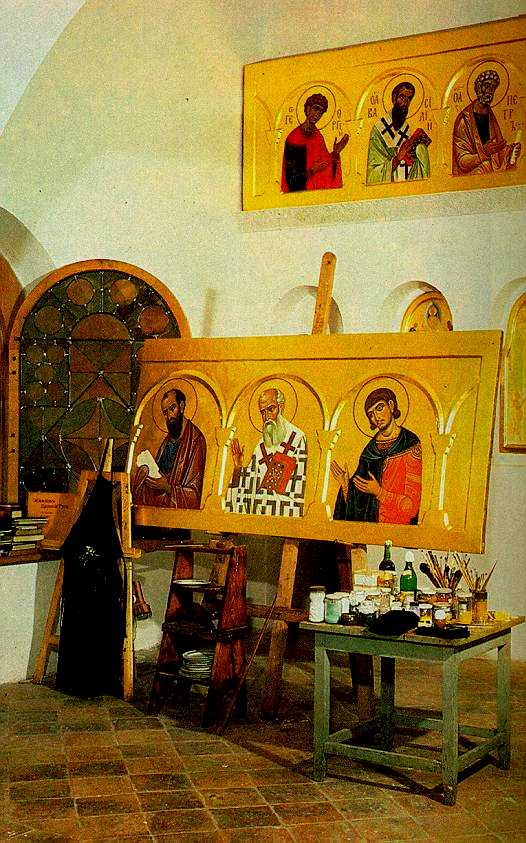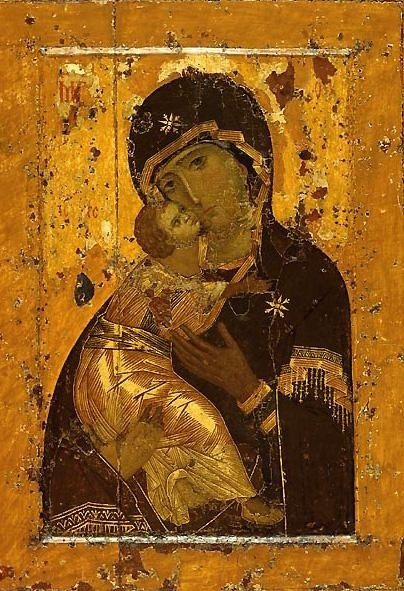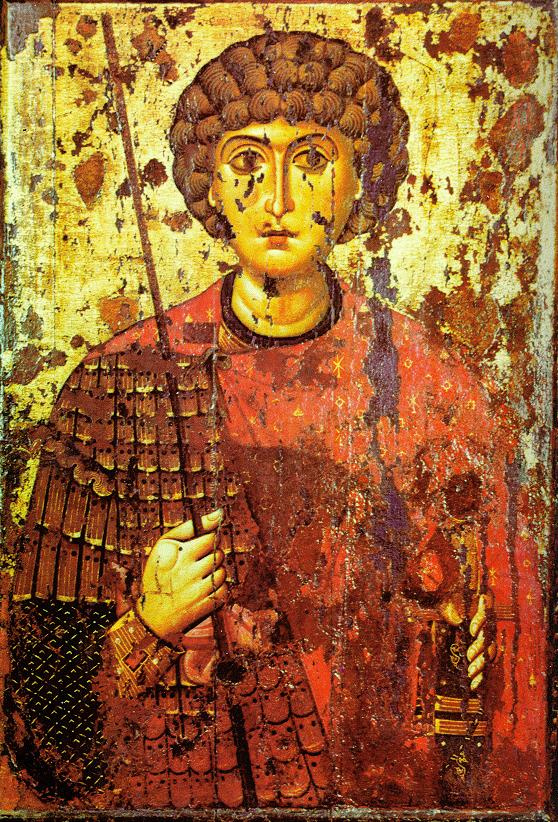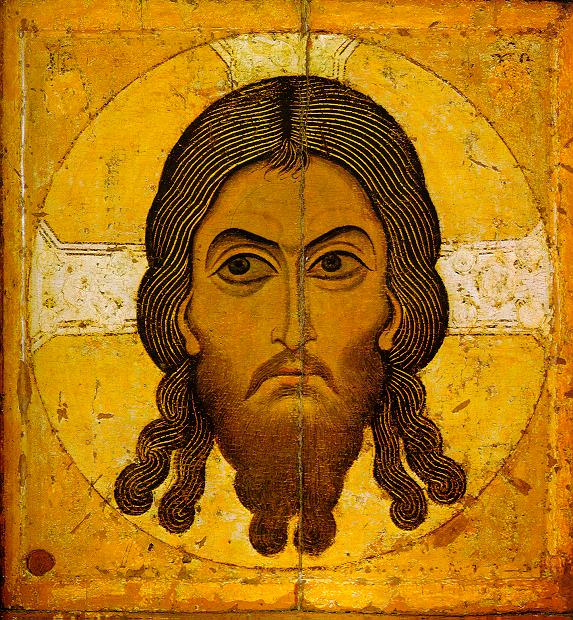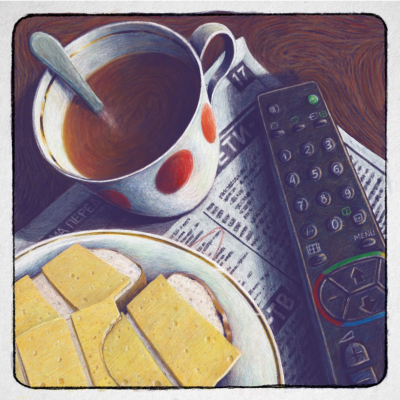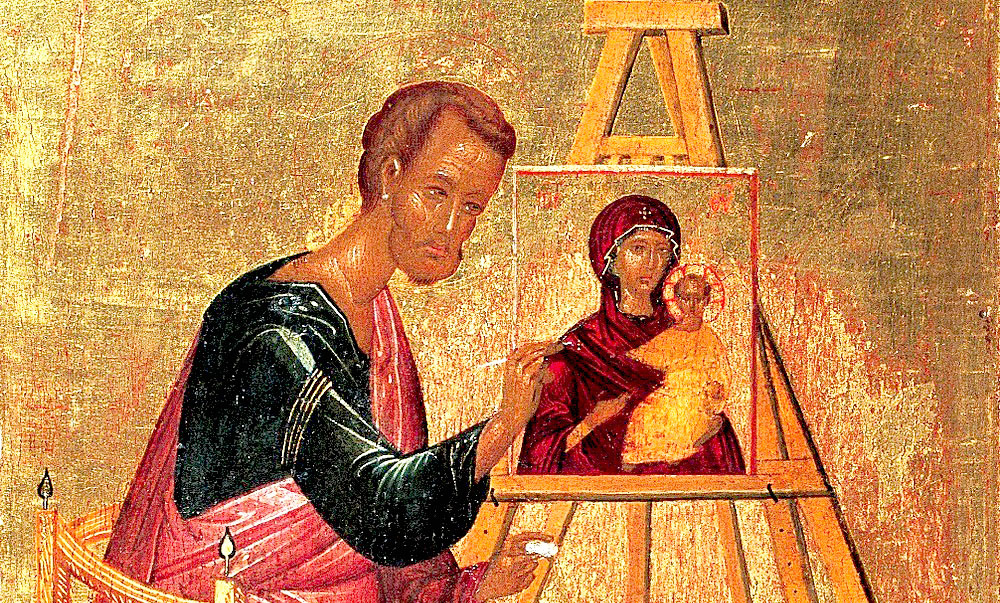
Such works replaced the written word with colours, just like Gothic cathedrals turned the scholasticism and secrets of alchemy into a visual language.
What is icon?
The Ancient Greek "ee-kon" (εἰκών) means "image", "likeness". However, the icon painting works are usually the images created for prayer, as a rule, they are painted on wood panels.
Icon is often called the "book of faith" and "theology in colours". Throughout the history of Christianity, it served as a symbol of people’s faith in God and His help.
Therefore, icon does not depict anything, it only shows the prototype. Its purpose is to reflect the divine essence in the human form.
This arises the need for a strict system of painting the sacred images — the iconographic canon. It determines the composition of the image: how to build the composition on a certain subject, how to draw faces, actions, and surroundings.
Positions of iconoclasts and icon-worshipers
The misunderstanding of the symbolic essence of the icons in the 8th — early 9th century brought to the dispute about the veneration of icons. Iconoclasts condemned the veneration of icons, considering them idols, and worshiping them was said to be idolatry.
The words of Anastasius of Sinai from the pre-iconoclastic period are significant: "Many people think that baptism is honoured enough by those who enter the church to kiss all the icons without paying attention to the liturgy and worship."
Icon-worshipers restored the ancient understanding of the image essence, when:
According to John Damascene, "icons are visible of the invisible and shapeless, but bodily depicted because of the weakness of our understanding". Through the icons, we dimly see the divine revelations. Thus, the veneration of icons was fixed by the dogma (immutable truth) of the Seventh Ecumenical Council in 787.
The birth of iconography
Tradition connects the creation of the first man-made icons with the apostle and evangelist Luke, who was not only an educated man, a doctor, but also an artist who painted the first image of the Mother of God.The classical homeland of iconography is Byzantium. It is from here that the icon painting, together with the Christian faith, first comes to the Balkan countries, and then to Ruthenia. Influenced by the Byzantine artistic culture, other national cultures, including the Old Ruthenian one, were formed, and also the iconography of all Orthodox countries developed: Bulgaria, Macedonia, Serbia, Ruthenia, Georgia, Syria, Palestine and Egypt. The culture of Italy, primarily Venice, fell under the influence of Byzantium too.
The earliest icons of the 6th-7th centuries, "Christ the Pantocrator (the Almighty)", "The Apostle Peter", "The Virgin with the Child", preserved the ancient technique of encaustic (wax was the binding agent of the paints). This brings them together with the masterpieces of Egyptian-Hellenistic art — Fayum portraits. Christian images inherited big eyes with a seal of detachment and a golden background from them as well.
Drawing up the Christian image
After the time of iconoclasm, the Hellenistic tradition got revised and adapted to Christian teaching. Antique naturalism disappeared, the image became more conventional, alive faces changed into holy faces. The reverse perspective is used, that is, the vanishing point is not located in the depth of the image, but on the person standing in front of the icon, and the timeless image. There is no light source (the whole icon is light-bearing) and the figures do not cast shadows, for there are no shadows in the Kingdom of God. All these features of the image were designed to separate the "heavenly" world from the "lower" one. For this purpose, it was also forbidden in the iconography to paint the Virgin, Christ and other saints from living people or according to the imagination of the artist, but only in accordance with the icon painting canon. Therefore, they used exempla — special guides for icon painters, where each story was verbally described.The symbol of the epoch was the Our Lady of Vladimir icon. It came from Constantinople to Kyiv in the beginning of XII century, but in 1155, it was taken away to Vladimir (hence the name) by Andrey Bogolyubsky.
Ruthenian iconography
The Orthodox faith brought the new art to Ruthenia; however, the artists did not copy, but processed Byzantine experience, adapted it to the local traditions, creating unique works. In addition, besides the Byzantine culture, Western culture was popular in Ruthenia, in particular Scandinavian.Unfortunately, most of the icon painting works of Kyivan Rus did not reach us, having perished in the devastating raids of the Tatars. However, that period still retained the name of the famous Ruthenian icon painter of the 11th — early 12th centuries: Alimpius Pechersky, the monk.
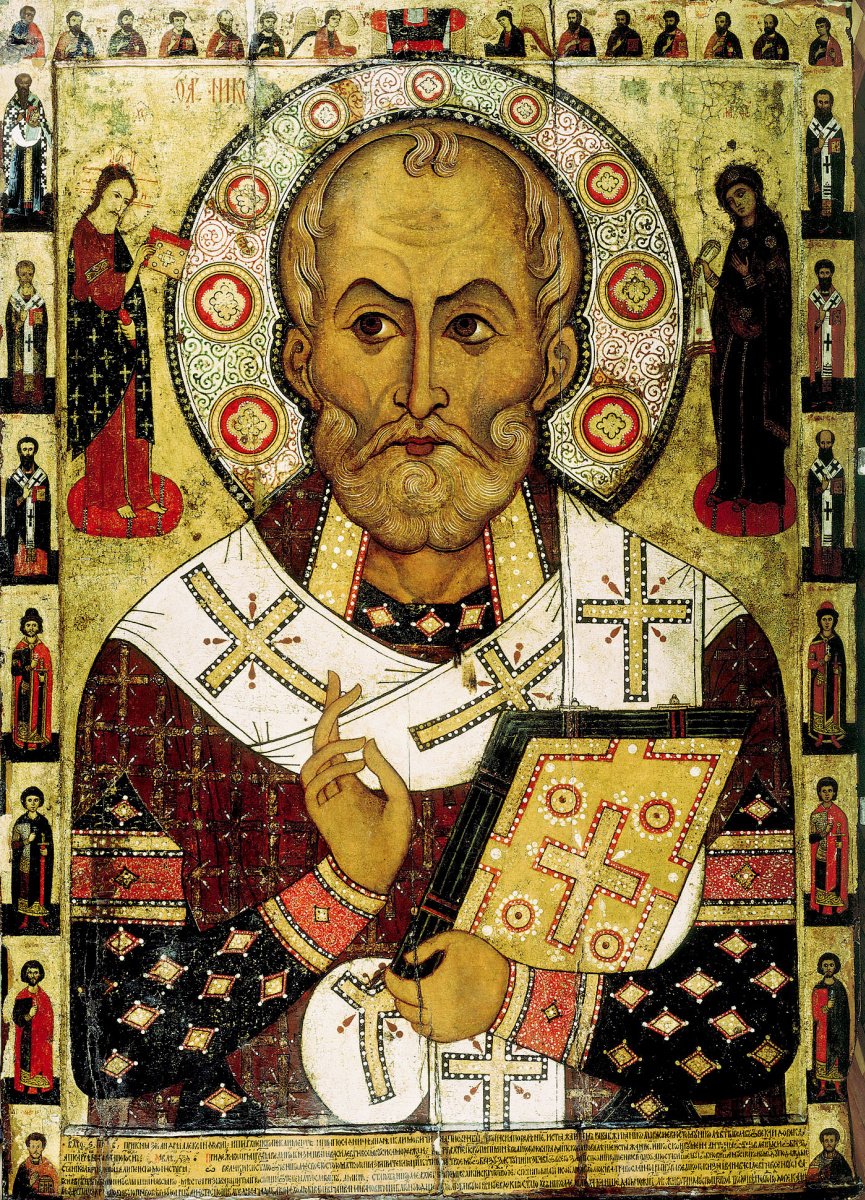
The Mongol-Tatar conquest and foreign expansion proved to be rather pernicious for the southern and south-western lands. Therefore, Moscow’s hegemony, established from the mid-14th century, took full advantage to overtake the centre of socio-political and cultural life, which gradually shifted to the north-east. The artistic life of the "third Rome" was led by the great master Theophanes the Greek.
At the end of the 14th-16th centuries, there appeared such a Russian national phenomenon as a high iconostasis. The oldest surviving Russian high iconostasis is the one in the Annunciation Cathedral. Obviously, it has risen due to the great role of Theophanes the Greek, Andrei Rublev and their comrades. The high iconostasis was a high wall of several rows of icons (tiers).

The lowest row is the Veneration tier; it contains the most revered local icons. Then goes the Deesis tier, it depicts the prayer to the Savior for the human race, with the figures of the Mother of God, the Forerunner, archangels, apostles, baptists, martyrs, saints and stulites. The Feast tier includes icons dedicated to the twelve major church holidays. In the 15th century, the Prophets tier appeared, with the Mother of God with the baby in its centre, and in the 16th century, there appeared the Forefathers tier with the central Trinity of New Testament.
The first seven icons of the Feast tier of the Annunciation Cathedral iconostasis are traditionally associated with the name of the famous icon painter of Ancient Ruthenia, Andrei Rublev.

In the 14th century, the cult of the Trinity was popular in East Slav lands, which had not only a theological, but also a historical basis. The inseparable Holy Trinity, condemned disunity and preached unity, and the distinct Trinity condemned foreign oppression and called for liberation.
The 17th century in the history of Muscovite icon painting began with the competition of two art schools: Godunov (many artworks were commissioned by Godunov and his relatives) and Stroganov (by the name of the patrons Stroganovs). In the iconography, the Stroganov school was manifested more vividly, their icons bore an intensified aesthetic principle: a virtuoso drawing and a rich delicate ornament. The most famous master of that trend was Procopius Chirin (photos of icons).
Gradually, the decline of icon painting begins: icons are painted primarily on commission, since the 18th century, oil painting has displaced traditional tempera technique, and the painting of icons attracts secular, irreligious artists.
The symbolism of icons
The expression "the language of icon painting" is more than just a metaphor. For people, sacral images become the standards of how to see the unseen, rallying the prayers.Conditionality of the image. The conditional nature of the painting emphasized the unearthly nature, spirituality in the guise of the persons depicted on the icon. This determined the stylized proportions of figures (elongated or shortened) — the idea of a transformed, purified flesh that inhabits the heavenly world.
Inscriptions. Inscriptions (titles) are necessary elements of the icon, they express the prototype as well as the image itself. It is symbolic that on the East Slav icons, the inscriptions are often in Greek, that is, they are not intended for understanding, but for sacred identification of the image and name.

Colour. The basis of Christian colour symbolism was developed by the Byzantine writer Dionysius the Areopagite in the 4th century. Thus, the cherry blossom, uniting red and violet (the beginning and the end of the spectrum) means Christ Himself, the beginning and the end of everything. Red is the colour of the blood of Christ, the divine fire; in Byzantium, it is the colour of royal dignity, but in the icons of martyrs it can symbolize sacrifice for the sake of Christ.
The golden colour was perceived as divine or taborian, which is connected with the Transfiguration of Christ on Mount Tabor, described in the Holy Scripture, where His image appeared in a blinding golden glow.
This colour on icons was created not with paint, but with gold, as a sign of involvement in the Divinity.
White is the symbol of the Divine light, the colour of holiness and simplicity.
The sign of sin. In Christian iconography, sin and vice are denoted by hair standing on end, a traditional demonic hairdo. Horns only occasionally appeared in the 17th century, but ihis did not cancel the loosened curls. Such a hairstyle in humans means that they are sinners, heretics or pagans. However, if the crested man is painted in dark paint, then it is a sign of demonic power.


Icon painting technique
Icon painting is essentially a continuation of the technique of wall painting liberated from the architectural dependence.Only afterwards you may use the prepared board for drawing. Initially, the first drawing is made, then the second, a more detailed one. After this the actual coloring begins; they call it roskrysh.

Icons revival
In the late 19th — early 20th centuries, there had been a real revolution in the science of church art. In the West, and then in Russia, Byzantine art was rehabilitated. The interest to the Russian icon was growing. Matisse, who visited Moscow in 1911, said about his impression, "The Russians do not suspect what artistic wealth they have… Your students have incomparably better examples of art here, at home, than abroad. French artists should go to Russia and study . Italy gives less in this area."The exhibition of 1913 became a true coup for wide circles. It revealed to the visitors, that the icon was "one of the most perfect works of the Ruthenian genius".
Iconography: A Crib
Artists who worked in icon painting: Alimpius Pechersky, Alexa Petrov, Theophanes the Greek, Andrei Rublev, Prokhor of Gorodets, Daniel Chorny, Dionisy, Procopius Chirin, Simon Ushakov, Nikifor Savin, Semen Spiridonov
You are an expert, if you:
• know that you must worship the prototypes that the icons reflect, not the icons themselves
• find the purpose of the icon in prayer, and not in the temple decoration
• understand that all the images on the icon have their meaning and symbolism
You are a layman, if you:
• consider icon painting nothing more than a painting genre
• find analogues of pagan idols in the icons
Author: Iryna Frykina






